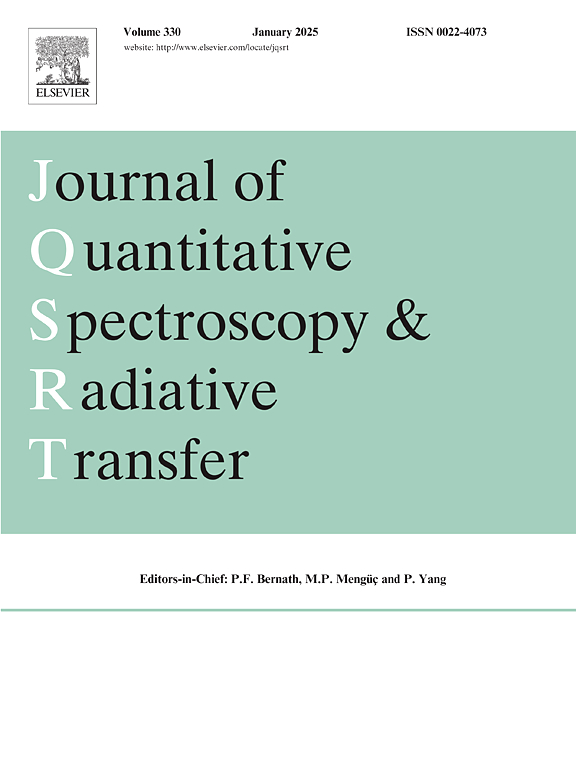Optical properties simulated for oceanic particles with nonspherical core-shell morphologies
IF 2.3
3区 物理与天体物理
Q2 OPTICS
Journal of Quantitative Spectroscopy & Radiative Transfer
Pub Date : 2025-02-24
DOI:10.1016/j.jqsrt.2025.109400
引用次数: 0
Abstract
Oceanic particles play a significant role in determining the optical properties of the upper layer of oceans and, subsequently, the radiative forcing effect at the atmosphere-ocean interface. However, it is challenging to quantify the optical effects of these particles accurately. This study introduces a comprehensive optical property lookup table for oceanic particles, which can be used for oceanic remote sensing implementations and radiative transfer simulations in ocean. Specifically, the optical properties of an ensemble of irregular core-shell hexahedra under the random orientation condition are used as the surrogates for the counterparts of phytoplankton and other oceanic particles within the visible spectrum. The present theoretical light scattering computational results agree reasonably well with measurements, particularly for the phase function P11. However, the linear polarization ratio − P12/P11 shows reasonable agreement between the computational results and measurements for Microcystis aeruginosa with gas vacancy and Asterionella formosa, but substantial differences are noticed in the comparison for Emiliania huxleyi and Microcystis aeruginosa without gas vacancy.
具有非球形核壳形态的海洋粒子的光学性质模拟
海洋粒子在确定海洋上层的光学特性以及随后的大气-海洋界面的辐射强迫效应方面起着重要作用。然而,精确地量化这些粒子的光学效应是一项挑战。本文提出了一种海洋粒子光学特性综合查找表,可用于海洋遥感实现和海洋辐射传输模拟。具体而言,在随机取向条件下,不规则核壳六面体系综的光学性质被用作浮游植物和其他海洋粒子在可见光谱内对应的替代品。目前光散射理论计算结果与实测结果吻合较好,特别是相函数P11。然而,线性极化比−P12/P11在有气体空位的铜绿微囊藻和台湾星形菌中,计算结果与测量值基本一致,而在无气体空位的赫胥利微囊藻和铜绿微囊藻中,计算结果与测量值存在较大差异。
本文章由计算机程序翻译,如有差异,请以英文原文为准。
求助全文
约1分钟内获得全文
求助全文
来源期刊
CiteScore
5.30
自引率
21.70%
发文量
273
审稿时长
58 days
期刊介绍:
Papers with the following subject areas are suitable for publication in the Journal of Quantitative Spectroscopy and Radiative Transfer:
- Theoretical and experimental aspects of the spectra of atoms, molecules, ions, and plasmas.
- Spectral lineshape studies including models and computational algorithms.
- Atmospheric spectroscopy.
- Theoretical and experimental aspects of light scattering.
- Application of light scattering in particle characterization and remote sensing.
- Application of light scattering in biological sciences and medicine.
- Radiative transfer in absorbing, emitting, and scattering media.
- Radiative transfer in stochastic media.

 求助内容:
求助内容: 应助结果提醒方式:
应助结果提醒方式:


